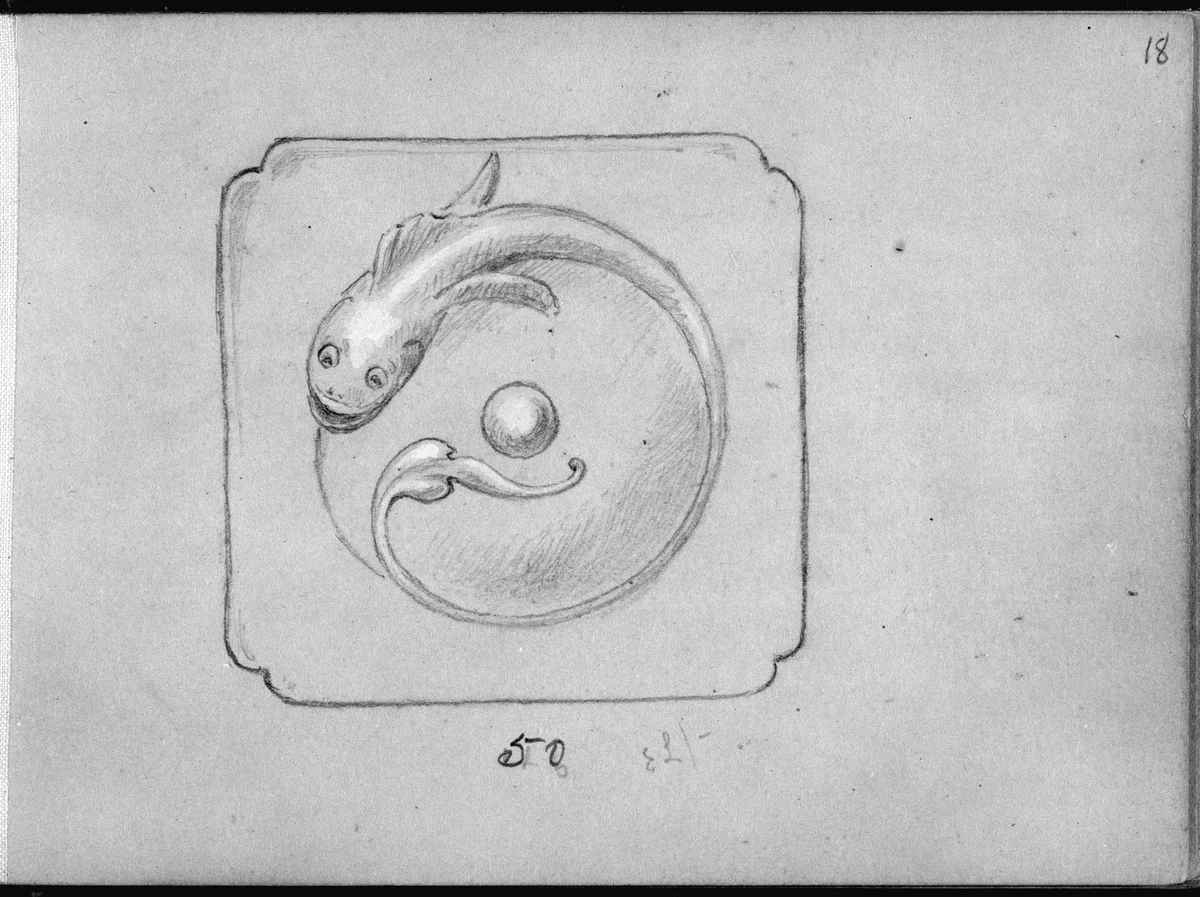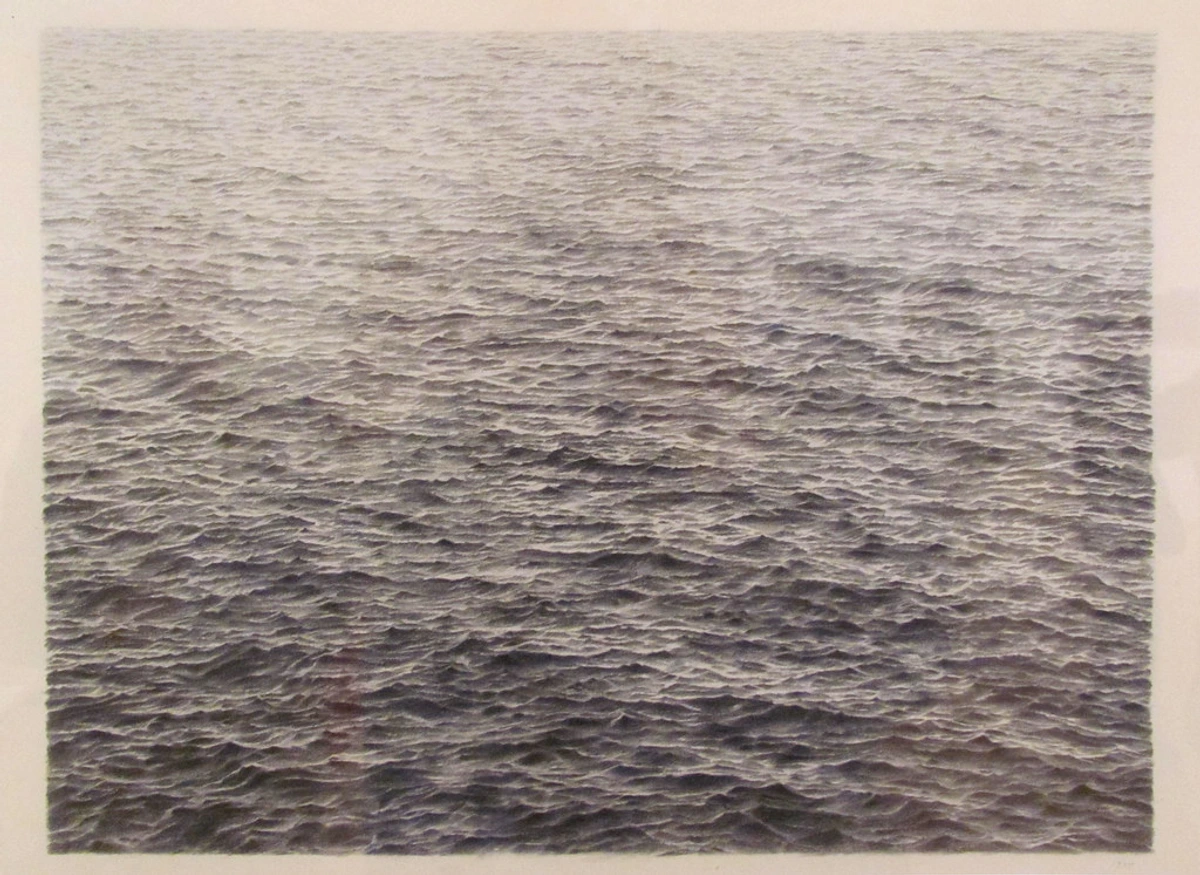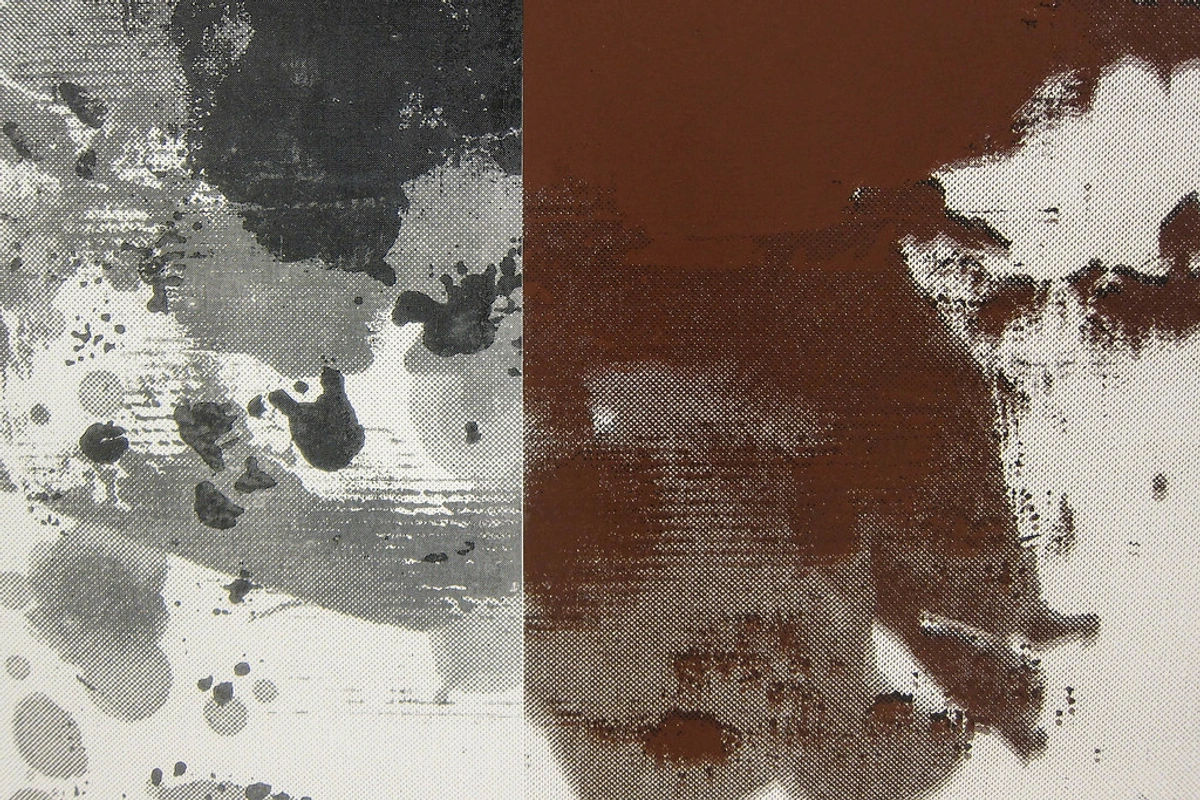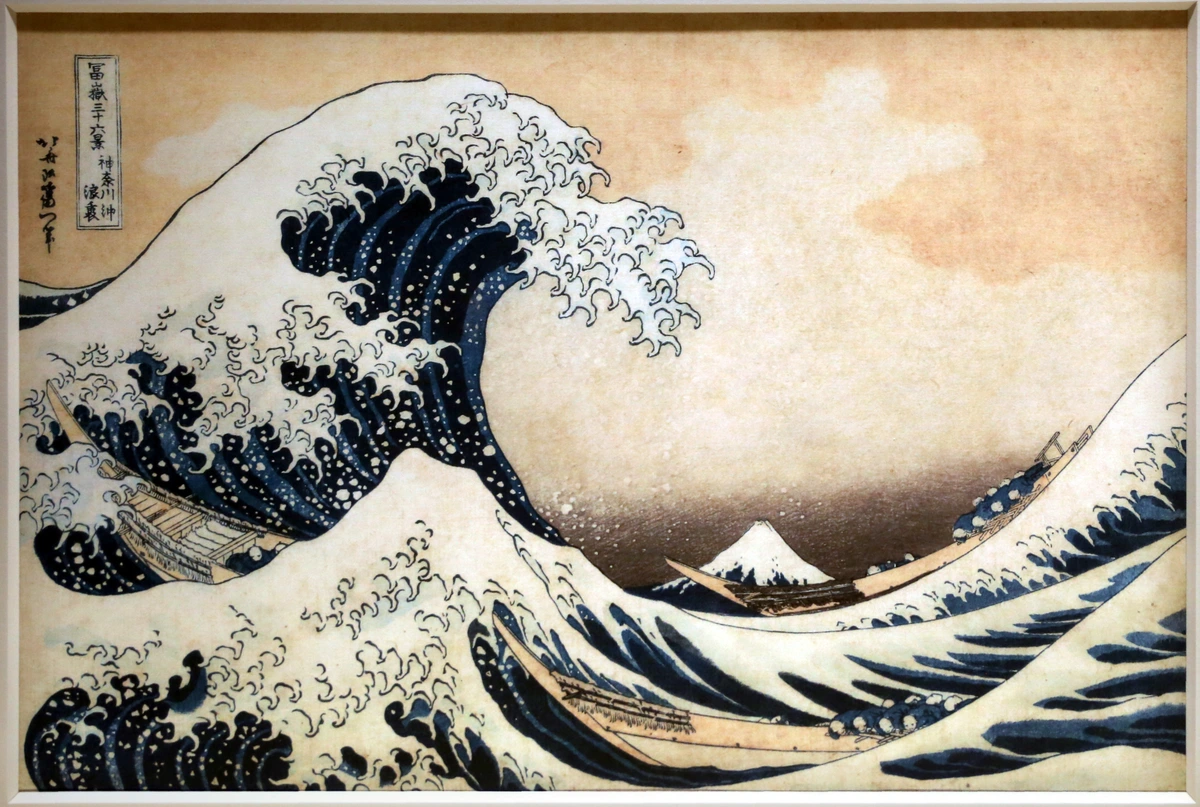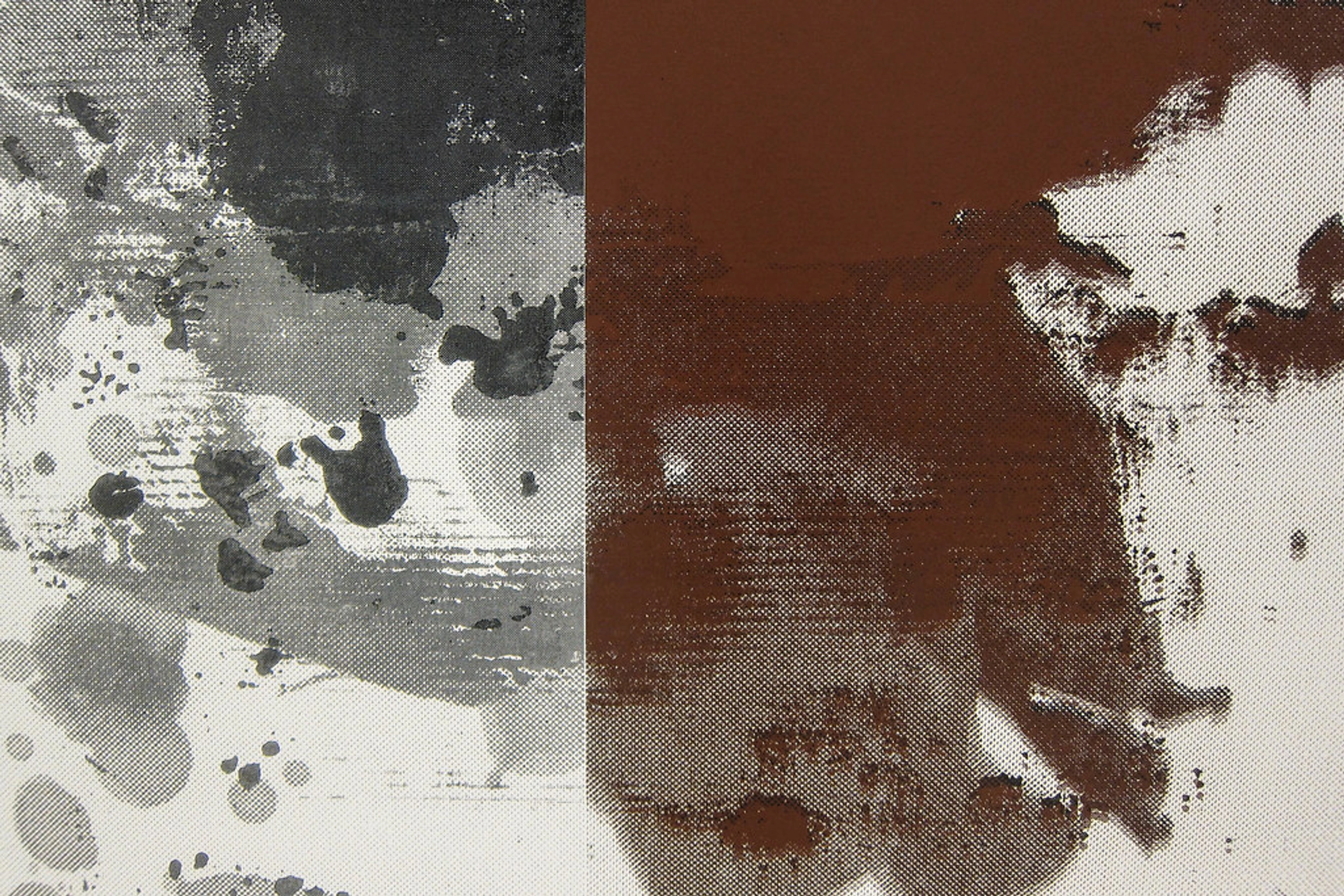
The Forgotten Gem: What Exactly is Casein Paint?
Ever wondered about that intriguing, often overlooked medium? Join me as I delve into the unique world of casein paint – its milky origins, matte finish, and surprising versatility for artists.
Casein Paint: The Resurfacing Masterpiece You Didn't Know You Needed (But Are About to Love)
Honestly, sometimes I feel like certain art materials are just waiting to be rediscovered, patiently sitting there while we artists chase the latest shiny trend. Casein paint, for me, is one of those quiet, unassuming masterpieces. It's not as flashy as some contemporary mediums, but oh, the depth and character it brings! If you've ever heard the name and thought, 'Milk? In paint? Really?', then you're exactly where I was once. As a curator, I find its blend of ancient history and modern versatility utterly compelling. It's a medium that bridges the past and present, offering unique textures and a luminous matte finish that truly sets it apart. So, let me pull back the curtain on this truly fascinating, and dare I say, slightly enigmatic, medium. It's a blend of raw history and modern practicality, offering a unique tactile and visual experience that, in my opinion, makes it an invaluable addition to any serious artist's repertoire.
Why Casein is More Than Just 'Milk Paint'
Let's be clear from the start: while its core ingredient is indeed milk protein, casein paint is far more sophisticated than a simple kitchen concoction. It’s an archival-quality medium with a lineage stretching back millennia, offering a unique set of working properties that truly distinguishes it. When I talk about casein, I'm talking about a paint that dries with remarkable speed, achieves a distinct velvety matte finish, and boasts an impressive durability once cured – qualities that have captivated artists from ancient Egypt to the American Regionalists of the 20th century. For me, it's not just a paint; it's a connection to a profound history of art-making, a reminder that some of the most enduring materials are often the most humble in origin. And in a world saturated with synthetic options, casein offers a refreshing return to natural elegance, inviting artists to explore its subtle power and expressive potential. Ready to dive in and uncover its secrets?
The Milky Secret: Unpacking Casein Paint's Composition
At its heart, casein paint is an ancient, water-soluble medium where the binder, the very glue that holds the pigment together, is derived from milk protein – specifically, casein. Yes, the same protein that gives cheese its structure! It’s truly one of the oldest forms of paint, predating even oil paints in widespread artistic use, and boasts a rich history that often goes unappreciated. When I first encountered it, I was struck by its duality: a paint that combines the best qualities of watercolor, gouache, and even acrylics, yet feels entirely distinct. That's the magic we're talking about here. It dries quickly, becoming incredibly durable and remarkably water-resistant once fully cured, but remains beautifully workable with water during the painting process. This unique combination of properties is what makes it so captivating, offering artists a versatile tool that can adapt to a wide array of techniques and expressive needs. It’s a testament to the ingenuity of early artists who discovered such powerful binding agents in the most unexpected natural resources.
The Science of Casein Polymerization
This protein-based binder, when treated with an alkali (like ammonia or borax), undergoes a fascinating chemical transformation. The alkali neutralizes the acidic casein, making it soluble in water and allowing it to bind pigments. As the water evaporates, the casein polymerizes, forming an incredibly strong and stable adhesive that locks pigments into place. This process is similar to how milk solidifies into cheese, but here, it's about creating a tough, artistic film. There are primarily two types of casein used in paints: acid casein, which is precipitated by acid (like lactic acid from fermented milk), and rennet casein, derived using enzymes (like rennet, traditionally from calf stomachs). Acid casein is generally harder and more brittle, while rennet casein is often more elastic and slightly warmer in tone. Each contributes slightly different handling qualities, though the final cured film from both is robust and long-lasting. It’s this remarkable transformation, this humble milk protein becoming an artist's tool, that makes it such an intriguing choice. And let's not forget, the fact that its origins are so natural adds a certain charm, don't you think? Understanding this fundamental chemistry not only demystifies the medium but also allows for a deeper appreciation of its archival qualities and unique handling characteristics. It's a blend of ancient wisdom and surprising scientific robustness, ensuring your pigments are held in a stable, luminous matrix.

Natural and Non-Toxic: A Sustainable Choice
In an age where environmental concerns are at the forefront, it’s worth noting that casein paint, in its purest form, aligns with a more natural approach to art making. The binder is derived from a renewable resource (milk), and when combined with natural earth pigments or modern non-toxic synthetic pigments, it offers an environmentally friendlier alternative to some synthetic mediums, particularly those derived from petroleum. This aspect, for me, adds another layer of appeal, connecting the artistic process to a broader sense of ecological responsibility and a sense of connection to ancient practices. It's a reminder that beauty doesn't have to come at the expense of our planet, and choosing your materials mindfully can be an artistic statement in itself. Moreover, many contemporary artists are actively seeking materials that align with their values, and casein, with its biodegradable binder and potential for low-impact production, fits perfectly into the growing movement of sustainable art practices. It’s about creating art that not only speaks to the soul but also respects the earth.
Environmental Impact and Sustainability of Casein Paint
Beyond just being 'natural,' the production of casein paint often involves a lower carbon footprint compared to petroleum-derived acrylics, especially when sourced responsibly from dairy byproducts. This aligns with a growing movement among artists who seek to minimize their environmental impact, choosing materials that respect both their craft and the planet. It’s about creating art with a conscience, finding beauty in materials that tell a story of natural harmony and sustainable practice. While not every casein paint on the market is 100% 'green' (always check specific brand formulations), the core material offers a foundation for environmentally mindful choices, making it a compelling option for those looking to lessen their ecological footprint in the studio.
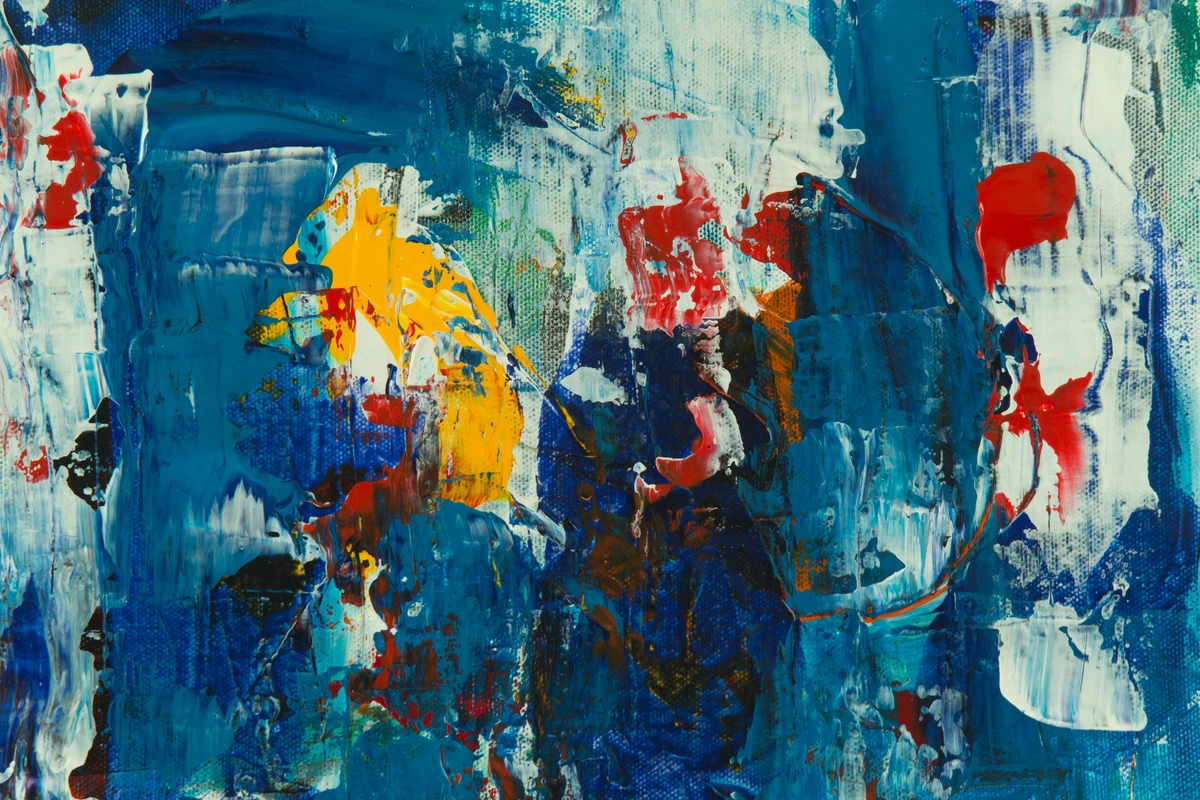
Why Casein? A Curator's Intrinsic Connection
Before we dive into the nitty-gritty, I often ask myself, why this particular medium? In a world overflowing with choice, what is it about casein that keeps me, and so many artists throughout history, coming back? For me, it's the profound sense of connection it offers – a tangible link to ancient practices, a whisper of permanence, and a challenge to my own artistic discipline. It demands attention, a swift hand, and a thoughtful approach, but in return, it offers a distinct voice, a luminous matte surface, and a durability that few other paints can boast. It’s this dance between ancient wisdom and modern expression that truly captivates me, beckoning artists to rediscover its quiet power. It’s like finding a hidden gem that, once polished, reveals a brilliance you never expected. This personal connection, this feeling of engaging with centuries of artistic tradition, is truly one of the greatest appeals of working with casein.
A Brief History of Casein: From Pharaohs to Frescoes
While modern acrylics might seem like the new kid on the block, artists have been mixing pigments with casein for millennia. It's not an exaggeration to say that this medium has touched the hands of history's greatest creators. Ancient Egyptians used it extensively for tomb paintings and sarcophagi, ensuring vibrant colors that have resisted the ravages of time for millennia. Roman artists incorporated it into their detailed frescoes, notably in Pompeii, where its fast-drying and durable qualities made it ideal for large-scale wall decorations. Medieval illuminators, too, relied on casein for the luminous finishes and intricate details in their precious manuscripts, achieving a brilliance that still captivates us today. Often referred to as 'casein tempera' or 'casein-lime fresco', it was a primary binder for various forms of tempera painting, providing remarkable durability for these monumental and delicate works alike. Its prevalence during the Byzantine era for icon painting further solidifies its historical significance, creating works of profound spiritual depth and lasting color. Think about the enduring frescoes of the Renaissance, many of which employed casein as a binder or underpainting, demonstrating its foundational role in Western art history. Its ability to create strong, permanent bonds with plaster surfaces was invaluable, contributing to the survival of countless masterpieces.
Then, like many good things, it faded a bit with the rise of oil painting's popularity, offering its longer drying times and blendability. But, here's the thing about true quality: it always finds its way back. Casein experienced a significant renaissance in the early 20th century, finding new advocates among American scene painters, muralists, and illustrators. Artists like Thomas Hart Benton, known for his dynamic regionalist murals, particularly valued its speed, matte finish, and capacity for crisp lines, making it perfect for his large-scale, intricate compositions. It also became a favorite for commercial illustrators who needed a fast-drying, opaque medium that reproduced well, lending itself beautifully to graphic design and print reproduction. This resurgence wasn't just a fleeting trend; it was a testament to casein's enduring quality and its ability to offer distinct advantages over its oil and watercolor counterparts, proving its worth over and over again. To me, that speaks volumes about its inherent value, echoing a timeless appeal that transcends eras.
The Unique Properties of Casein Paint: An Artist's Ally
This is where casein really starts to shine, or rather, to subtly glow with its unique characteristics. It’s not just 'milk paint'; it’s a specific kind of alchemy that transforms a simple protein into a remarkably versatile artistic tool. I've found that understanding these nuanced properties is absolutely key to unlocking its full potential and, frankly, avoiding some frustrating moments! It's about knowing your medium, truly listening to what it wants to do, and guiding it. Each property, from its distinctive drying speed to its luminous finish, contributes to a unique artistic experience that differentiates it from every other paint on your palette. Let's delve into what makes casein so special, and how you can harness these qualities to elevate your artistic practice.
Fast Drying and Strategic Workability: A Dual Advantage
The first thing you'll notice about casein is just how quickly it dries. Seriously, sometimes it feels like it's dry before you even lift your brush from the canvas! This lightning-fast drying time is a huge advantage for layering without muddying colors, allowing for crisp edges and distinct layers, or for artists who, like me, sometimes lack patience. Imagine building up complex compositions, adding multiple layers and details in a single session—that's the power of casein. I remember once trying to blend a complex gradient and realizing halfway through that the first stroke was already setting! It was a frustrating lesson, but it taught me the importance of preparedness and precision. To mitigate its speed on the palette, I often use a stay-wet palette or keep a spray bottle of water handy to mist my paint, preventing it from drying out prematurely.
Working wet-into-wet for seamless blending is an option, but you have to be swift and decisive. This speed is particularly beneficial for techniques like scumbling (applying thin, broken layers of opaque color over a dry underlayer to create texture and luminosity) or hatching and cross-hatching, where quick, successive marks build up form and texture without blending into a muddy mess. You can even experiment with dry brush effects to highlight the texture of your surface, adding a raw, expressive quality.
Despite this speed, it’s a very forgiving medium in terms of application style, allowing for a remarkable range of effects. You can thin it with water for delicate, transparent washes reminiscent of watercolor, apply it opaquely like gouache or traditional tempera, or even build up substantial impasto textures with thicker applications. This adaptability truly makes it a chameleon of the art world, adapting to your vision with surprising ease, provided you learn its rhythm and plan your approach. This rapid drying, while a blessing for layering, teaches you efficiency, decisiveness, and a certain respect for the material's inherent rhythm. It's not about forcing the paint to conform to your habits, but rather finding a harmonious dance with its unique properties, pushing you to work with intention and a focused energy.
Matte Finish Magic: The Luminous Depth of Non-Reflectivity
Perhaps casein's most distinguishing feature, and certainly one of its most beloved, is its beautiful, velvety matte finish. Unlike the often glossy sheen of many acrylic paints or traditional oil paintings, casein paint absorbs and diffuses light rather than reflecting it directly. This unique quality gives colors a soft, luminous depth, making them feel richer and more integrated into the surface of your artwork. It’s almost as if the pigment becomes one with the support, rather than merely sitting on top. For artists working in abstract styles, this can be transformative, creating a sense of quiet power and a profound connection between viewer and artwork. It's fantastic for capturing subtle light, creating a sense of antiquity or timelessness, or just achieving a sophisticated, non-reflective surface that's a joy to view from any angle. If you've ever been frustrated by glare obscuring the nuances of your artwork, casein might just be your new best friend. It truly has a unique ability to make colors feel deeper, more integrated into the surface, fostering a sense of timeless elegance. And while its natural inclination is matte, a strategic varnish (once fully cured, of course!) can introduce a satin or gloss finish if your artistic vision calls for it, offering yet another layer of control over the final presentation. ### Durability and Longevity: A Timeless Investment
This is where the 'ancient secret' really comes into play, a testament to casein's enduring legacy and its profound suitability for lasting artworks. Once fully cured – and this often takes a few weeks to a month, contingent on paint thickness, humidity, and environmental conditions – casein paint transforms into an incredibly tough, resilient, and remarkably water-resistant film. It’s crucial to understand that it's not fully waterproof like cured acrylics (meaning, you wouldn't want to leave it submerged in water), but its resistance is substantial enough to withstand moisture, splashes, and gentle cleaning without smudging or dissolving, far surpassing many other water-based mediums like traditional watercolors. This impressive archival quality is precisely why so many historical works, from ancient Egyptian tomb paintings to medieval frescoes, have survived centuries, often in remarkable condition. The curing process involves a cross-linking of the protein molecules, creating a stable, insoluble matrix. It creates a durable, non-yellowing film that stands the test of time, resisting cracking, chalking, and degradation far better than many traditional mediums, especially when applied to a stable support. For any artist, the longevity of their work is paramount, and casein offers a reassuring promise that your creations will endure, carrying your artistic voice into the future. Just remember, a proper varnish after full curing can add another layer of protection, particularly against UV light and environmental pollutants. ### Transparency and Opacity: The Versatility of Light and Shadow
Depending on how much water you add, casein can truly swing from delicate, transparent washes, much like a subtle watercolor glaze, to rich, opaque layers similar to the vibrant punch of gouache or traditional tempera. This remarkable adaptability is one of its greatest strengths and a joy for experimentation. I personally love experimenting with layers, building up color from translucent washes that allow underlying tones to shimmer through, creating a luminous glow, to solid, opaque blocks that command immediate attention. This versatility means you can achieve effects ranging from delicate atmospheric hazes to bold, graphic statements, all within the same medium. For instance, you could lay down a transparent wash as an underpainting to establish values and composition, then build up opaque details and highlights on top, much like some Renaissance masters used tempera, or even explore glazing techniques with thin, translucent layers to build incredible depth. It’s a bit like having several different mediums rolled into one, which, let's be honest, appeals greatly to my inner multi-tasker and the desire for diverse expressive possibilities, pushing the boundaries of what a single paint can achieve. ### Water Reactivation (or not?): A Nuance for Control
Now, here’s a crucial nuance that artists often grapple with: while wet, casein is fully re-workable with water, allowing for blending and adjustments. Once a layer is dry, new layers can certainly be applied over it. However, here's the critical distinction: if previous layers are not yet fully cured (which, as we discussed, can take weeks, even a month for thick applications), they will reactivate slightly with the application of fresh, wet paint. This characteristic is precisely why some artists embrace it for subtle blending, softening of edges, and creating unique painterly transitions, especially useful for creating atmospheric effects or seamless color transitions in portraiture or landscape. But once thoroughly dry and completely cured, casein becomes remarkably stable and resistant to re-wetting. This hardened film allows for crisp, clean overlays and precise details to be applied without disturbing older, underlying layers, provided you work gently and efficiently. Think of it as having a window of opportunity for blending, followed by a durable, unyielding surface for subsequent details. It’s a delicate balance, this dance between initial re-workability and ultimate permanence, but one that ultimately offers immense creative control and unique textural possibilities once mastered.
Working with Casein: Techniques, Tips, and Triumphs
Making Your Own Casein Paint: A Journey into Traditional Craft
For the truly adventurous artist, or those deeply curious about the historical origins of their materials, making your own casein paint can be an incredibly rewarding experience. It connects you to a lineage of artists who, for centuries, ground their own pigments and binders. It’s a bit like baking bread from scratch – it takes effort, but the connection to the process is unparalleled. Keep in mind, this is a simplified overview, and truly archival homemade paints require rigorous testing and knowledge of pigment compatibility. But, for exploration, it's a fantastic journey. There’s a profound satisfaction that comes from creating your own materials, a deeper understanding of the alchemy involved, and a direct link to the artistic traditions of the past. It’s an immersive process that transforms your understanding of paint from a mere product into a living, breathing substance.
Ingredients You'll Need
To embark on this journey, you'll need a few key components. Think of it as setting up a small chemistry lab, but for art!
- Casein Powder: This is the purified milk protein, often sold in fine powder form and readily available from specialist art suppliers or even some health food stores. If you're going truly traditional, you can precipitate it from skim milk yourself using vinegar (for acid casein) or rennet (for rennet casein). This raw form of the binder is the heart of your paint.
- Alkali: Ammonia water (common household ammonia, diluted) or borax are the typical choices. This alkali is crucial because it neutralizes the acidic casein, making it soluble in water and enabling it to bind pigments effectively. Be sure to work in a well-ventilated area when using ammonia.
- Pigments: High-quality, finely ground artist pigments in dry powder form are essential. Always ensure they are lightfast (resistant to fading from light exposure) and, importantly, non-toxic. Researching your pigments is key to both the safety and longevity of your homemade paint.
- Water: Distilled water is often recommended to avoid any impurities (like minerals or chlorine) found in tap water that could potentially react with the casein or pigments and affect archival quality.
- Optional Additives: A small amount of preservative, such as clove oil (a traditional choice) or a commercial biocide, can be added to extend the shelf life of your homemade paint, especially if you don't plan to use it immediately. Without it, homemade casein is prone to spoilage fairly quickly.
The Step-by-Step Process (Simplified)
This is where the magic truly happens, transforming simple ingredients into a versatile artistic medium. Follow these steps, and remember that patience and precision are your best friends:
- Dissolve the Casein: Begin by mixing your casein powder with a small amount of distilled water to form a thick, stiff paste. This prevents lumps later. Then, gradually add your chosen alkali (e.g., dilute ammonia water), stirring constantly. The mixture will initially be thick and lumpy, but as the alkali works, the casein will slowly dissolve and become a smooth, translucent, gel-like solution. This can take anywhere from 15 minutes to an hour, so don't rush it! A good analogy is watching sugar dissolve in water – it takes time and agitation.
- Add Pigment: Once your casein solution is perfectly smooth and clear, it's time for color! Transfer a portion of the solution to a glass slab or a non-absorbent mixing surface. Gradually add your chosen dry pigment to the binder. Use a palette knife to thoroughly grind the pigment into the casein solution. The goal is to break down any pigment agglomerates and ensure every particle is thoroughly wetted and coated by the binder, forming a smooth, consistent paint without any gritty texture. This grinding process is crucial for vibrant color and good paint film integrity.
- Adjust Consistency: Now, you can thin your newly made paint with small additions of distilled water to achieve your desired consistency. For delicate, transparent washes, aim for an ink-like viscosity. For rich, opaque, buttery applications, use minimal water to keep it thick, similar to soft butter. Experimenting with these ratios is key to understanding the full range of effects.
- Test and Store: Always test a small batch on a scrap surface first to check its color, consistency, and drying properties. Homemade casein paint generally has a shorter shelf life than commercial formulations due to the absence of industrial preservatives. Store it in airtight containers (small jars or empty paint tubes work well) in the refrigerator if you intend to keep it for more than a few days. Label clearly with the pigment and date of creation! Discard if you notice any off-smells or mold.
Important Considerations for Homemade Casein
While deeply satisfying, making your own paint requires attention to detail. Pigment compatibility, proper grinding, and the correct ratio of binder to pigment are crucial for archival quality and working properties. Always wear gloves and a dust mask when handling dry pigments, and ensure good ventilation. This DIY spirit, by the way, reminds me a lot of the journey one takes when learning how to make your own gesso – it deepens your understanding of the materials.

credit, licence
So, you're intrigued, right? Thought so! It's one thing to understand a medium's properties on paper, and another to truly make it sing on canvas. But how do you actually use this intriguing medium effectively? It's certainly not rocket science, but a few pointers from my own experience, and that of other artists I admire, can save you a lot of trial and error. Think of these as guiding principles to help you navigate casein's unique personality. ### Preparing Your Surface: The Foundation for Success
Casein adheres wonderfully to a vast variety of surfaces, but it truly thrives on absorbent and rigid ones. Think sturdy wood panels, hardboard, illustration board, heavy paper (like good quality watercolor paper, at least 140lb/300gsm), or properly gessoed surfaces. I've personally had great success on rigid supports, as casein, like many traditional paints with a less flexible dry film, absolutely prefers a stable, unyielding ground. While it can be used on canvas, I often advise against overly flexible canvases, especially if you're going for thick impasto layers. Extreme flexing can cause cracking over time – a common issue with many rigid-drying paints, not just casein!
For canvas, ensuring it's well-stretched and primed with at least two coats of acrylic gesso is crucial. Learning how to apply gesso properly can make a significant difference to the adhesion, vibrancy, and longevity of your casein work. Some artists even prefer a traditional rabbit-skin glue or casein-based gesso for a truly authentic experience, which can create a wonderfully absorbent and sympathetic ground. When gessoing, consider the texture: smooth gesso for fine details, textured gesso for a more expressive surface. Remember, the choice of gesso can dramatically influence the final appearance and handling of your casein paint, so experiment to find what resonates with your artistic style.
To be clear, avoid slick or non-absorbent surfaces like unprimed metal, glass, or plastic. Casein needs a slight 'tooth' to adhere properly and form a durable bond. Think of it like trying to stick a label to polished glass versus textured paper – the latter offers a better grip. The right surface can truly bring out the best in your casein paint, allowing it to perform to its full archival potential.
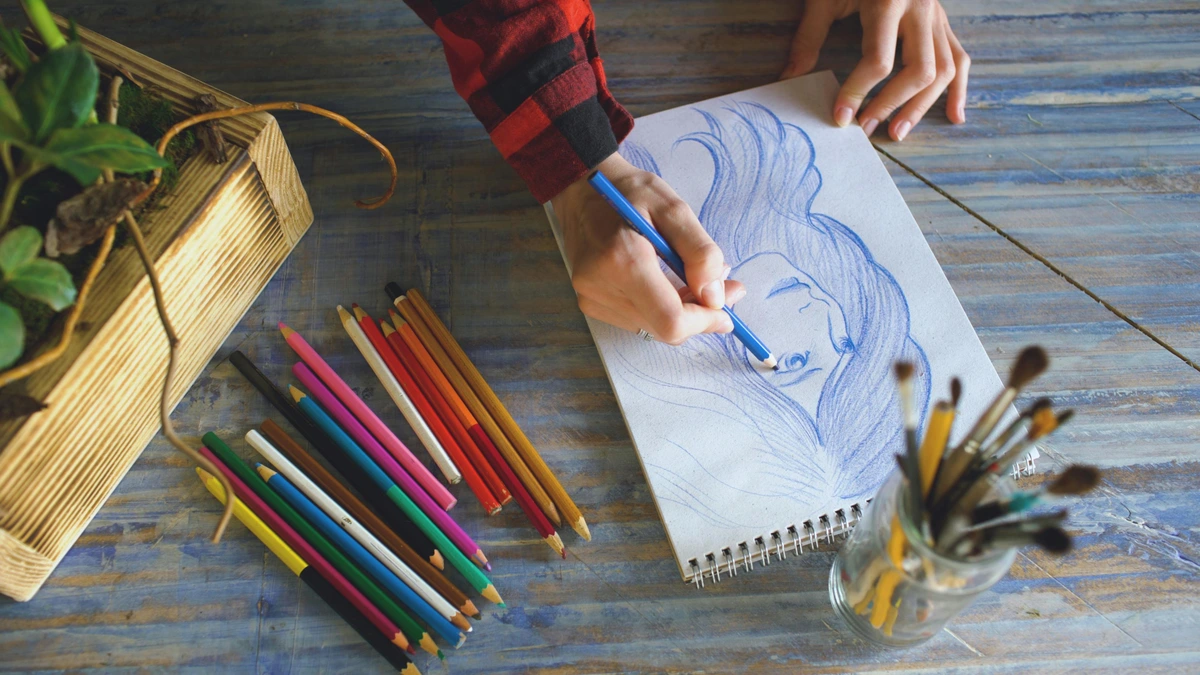
credit, licence ### Mixing and Application: Crafting Your Consistency
Casein comes in tubes, much like most other paints you're familiar with. I typically start by squeezing a bit onto a non-absorbent palette (glass, ceramic, or plastic works well), then gradually adding water with a brush to achieve my desired consistency. This is where you gain immense control over the final effect:
- For delicate, transparent washes, add a significant amount of water, aiming for an ink-like consistency. These are fantastic for luminous glazes and establishing initial color fields, much like watercolor.
- For rich, opaque, buttery applications, use minimal water, creating a consistency similar to thick gouache or soft pastels. This allows for excellent coverage and vibrant, flat areas of color.
- For impasto textures, you'll want it almost straight from the tube, like soft butter. A palette knife can be your best friend for bold, expressive applications that retain brush or knife marks.
Remember, the fast-drying nature of casein means you should mix only what you need for the immediate task, or be prepared to work quickly and perhaps re-wet your palette occasionally. Don't be afraid to experiment with these ratios! That's how you'll discover the sweet spot for your preferred application style. From thin stains to thick, textured strokes, casein responds beautifully to your touch, offering a spectrum of possibilities. The key is constant adjustment and observation, learning to 'read' the paint as it dries.
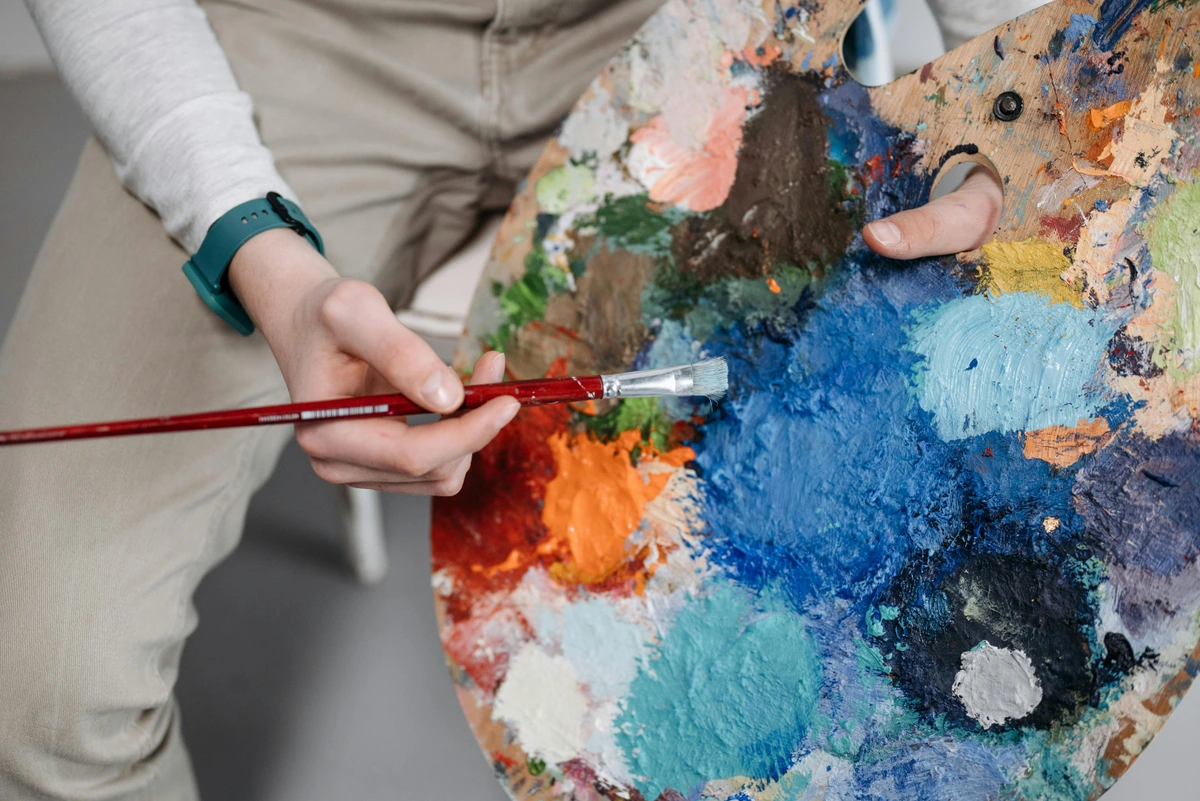
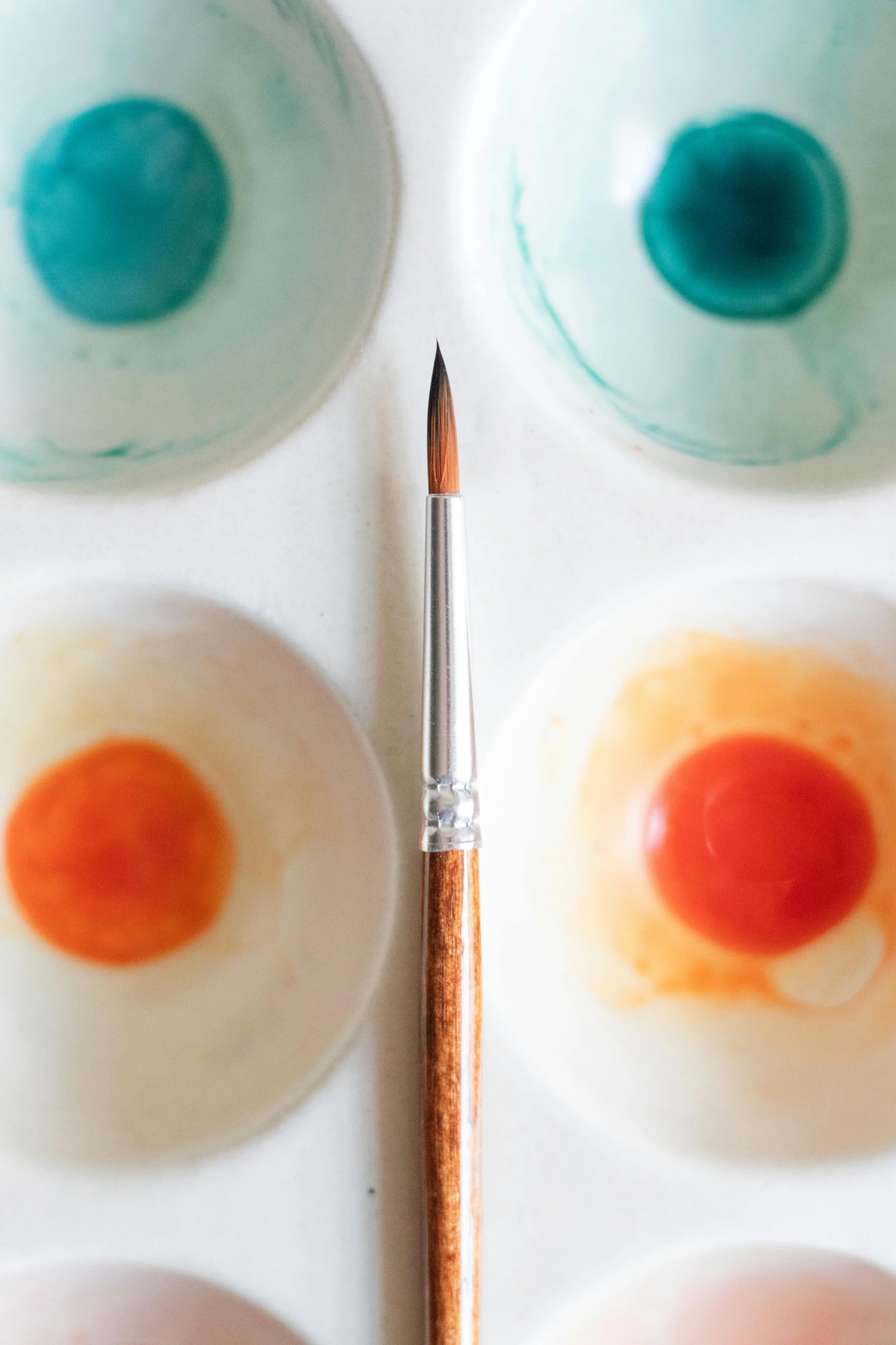
credit, licence ### Layering and Glazing: Building Depth with Control
Because of its fast-drying nature and the potential for slight reactivation (which we discussed earlier), casein is truly fantastic for building up layers. This characteristic allows for a unique approach to depth and luminosity. You can create rich, luminous glazes by thinning the paint considerably with water, applying translucent veils of color that build upon one another without disturbing the underlying layers once they're sufficiently dry – much like glazing in oil painting, but with a much faster turnaround. Or, you can build up solid, opaque blocks of color, achieving a distinct visual weight and a graphic clarity. One technique where casein truly excels is the dry brush effect, where minimal paint on a relatively dry brush creates broken, textured lines that really highlight the tooth of your surface, adding a wonderful raw and expressive quality to your work. This is fantastic for capturing movement, subtle textures, or creating a sense of age. Another exciting technique is sgraffito, where you can scratch into a wet or partially dry layer of casein to reveal the color of the underlying surface or previous layer, creating intricate lines and textures. Just remember to let each layer dry sufficiently before adding the next, especially if you want crisp lines and distinct color separation. This mindful approach to layering colors is key to mastering casein and unlocking its full expressive range. ### Brushes and Tools: Your Essential Companions
For brushes, I personally lean towards natural hair brushes for softer applications, delicate washes, and subtle blending, as they hold water well. Sable or squirrel brushes are wonderful for fine detail and smooth applications. For more structured work, impasto, or precise lines, synthetic brushes offer the stiffness and snap you might prefer, particularly good for pushing thicker paint or creating sharp edges. The key with casein, and I cannot stress this enough, is to clean your brushes immediately after use. Seriously, casein dries hard, and once it's set into the bristles of your brush, it's a real pain to remove, potentially ruining your tools permanently. Warm water and a mild soap are your best friends here. Don’t let it linger! A thorough cleaning and rinsing will usually suffice if caught in time, but leaving them soaking can damage the ferrules. Beyond brushes, don't forget other essential tools: palette knives can be excellent for applying thicker paint directly, creating bold, expressive textures, and for mixing colors on your palette without contaminating your brushes. Additionally, simple water containers (multiple are ideal for clean rinsing: one for initial rinse, one for final clean) and a reliable non-absorbent palette will make your painting experience much smoother. For more on brush care, check out our guide on cleaning and caring for your paint brushes. I've learned this lesson the hard way, and trust me, a ruined sable brush is a tragedy no artist should endure.
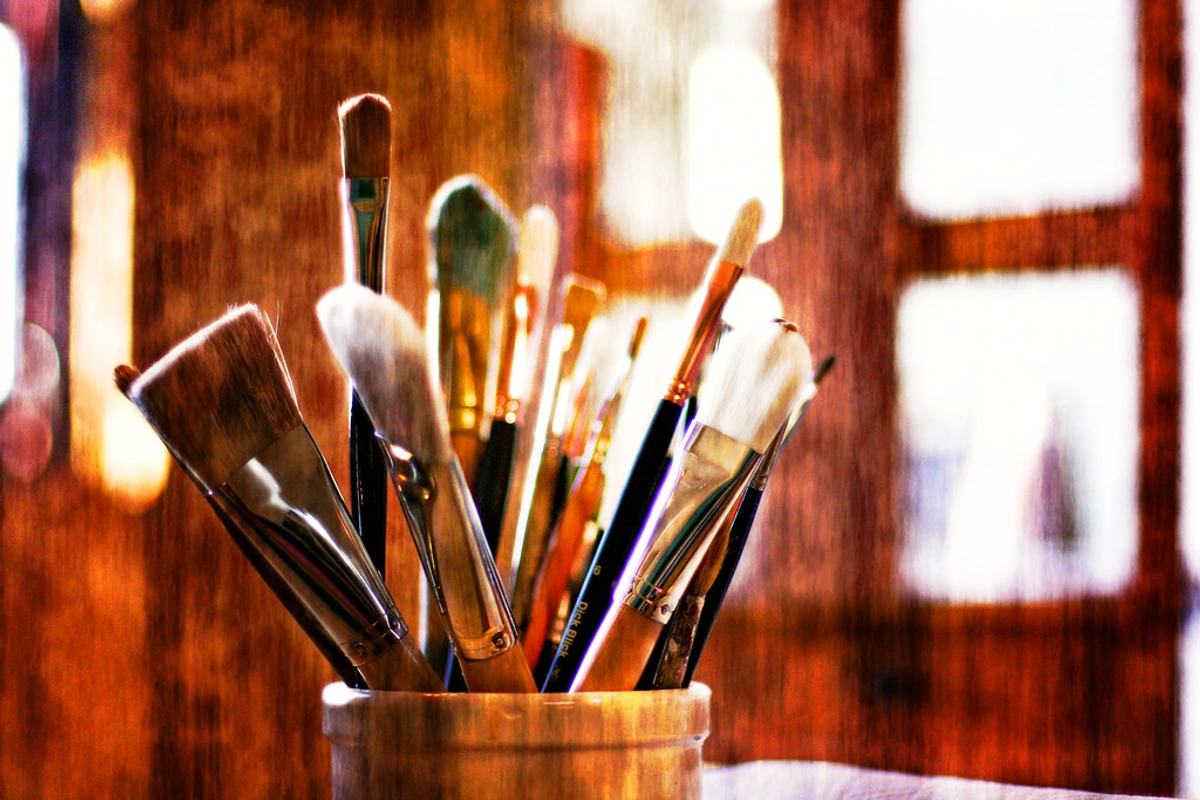
credit, licence ### Casein Mediums and Additives
Like many paints, casein isn't always used straight from the tube. There are various painting mediums and additives designed to modify its working properties, often enhancing specific characteristics. You can find specialized casein mediums that enhance transparency for luminous glazes, increase flow for smoother, more even applications, or even add a subtle sheen if that's desired. Some artists use casein paste medium to build texture and body without affecting the color's opacity, similar to a heavy gel medium for acrylics. Some adventurous artists even create their own emulsions by adding small amounts of stand oil or other oils for specific effects, though this requires careful formulation to maintain stability and archival quality. Retarders, while less common than with acrylics, can be used sparingly to extend the open working time, though this often comes at the expense of its beloved rapid drying characteristic. A word of caution: always test any additives on a scrap surface first to fully understand how they interact with your specific brand of casein paint, as not all combinations are stable or advisable for archival purposes. Understanding these modifiers can unlock an even wider range of expressive possibilities.

Casein vs. Other Paints: Finding its Place in Your Palette
To truly appreciate casein, and to understand where it fits into your artistic practice, it helps to see it in context with its siblings in the paint family. It truly carves out its own distinct niche, offering a unique set of advantages that other mediums simply can't replicate, making it a compelling choice for artists seeking something beyond the conventional. Let's compare it to some other popular mediums, keeping in mind that each has its own strengths and weaknesses, and the 'best' choice always depends on your artistic goals and the specific effects you aim to achieve. For a broader dive into various art paints, including comprehensive comparisons, you might want to check out our definitive guide to paint types for artists. | Feature | Casein Paint | Acrylic Paint | Oil Paint | Tempera (Egg) | Gouache | Watercolor | | :---------------------- | :--------------------------------------------------- | :------------------------------------------------------ | :--------------------------------------------------- | :-------------------------------------------------------- | :---------------------------------------------------- | :--------------------------------------------------- | | Binder | Milk protein (casein) | Acrylic polymer emulsion | Linseed oil or other drying oils | Egg yolk | Gum arabic with opaque fillers | Gum arabic, often with glycerine/honey | | Drying Time | Very fast (minutes) | Fast (minutes to hours) | Very slow (days to weeks) | Fast (seconds to minutes per layer) | Fast (minutes) | Fast (minutes) | | Finish | Velvety matte, non-glossy | Versatile (matte to glossy, depending on medium) | Luminous, glossy (can be dulled with mediums) | Matte, luminous, slight sheen | Opaque matte to velvety | Transparent, luminous | | Water Reactivity (when dry) | Becomes water-resistant, but not fully waterproof; can reactivate slightly when uncured | Becomes completely water-insoluble when dry | Not water-soluble | Water-soluble when wet, but largely water-resistant when dry | Re-workable indefinitely with water | Re-workable indefinitely with water | | Flexibility | Relatively rigid when dry, can crack if applied thickly on flexible surfaces | Very flexible when dry | Flexible when dry | Rigid when dry, can crack if applied thickly on flexible surfaces | Somewhat flexible | Very flexible when dry | | Longevity/Archival | Excellent, very durable and non-yellowing | Excellent, generally non-yellowing | Excellent, can yellow slightly over time | Excellent, very durable and non-yellowing | Good, but susceptible to flaking if too thick | Excellent if protected from light and moisture | | Solvent for Cleanup | Water (while wet), household cleaners (if dry) | Water (while wet), specific cleaners (if dry) | Mineral spirits, turpentine | Water (while wet) | Water (while wet) | Water (while wet) | | Historical Context | Ancient, revived in 20th century | Mid-20th century invention | Used for centuries, popular from Renaissance onwards | Ancient, dominant before oils | Popular since ancient Egypt, modern revival | Ancient, popular in Asia, Renaissance, modern | | Typical Use | Murals, illustrations, underpaintings, fine art with matte finish | Versatile, popular for all styles, mixed media, abstract | Traditional fine art, portraits, landscapes, realism | Illuminations, detailed work, early Renaissance panels | Illustrations, fine art, opaque watercolor | Illustrations, fine art, transparent washes | | Pigment Load/Coverage | High, good opacity (dries lighter) | High, excellent opacity | High, excellent opacity (often transparent in glazes) | High, good opacity | Very High, opaque | Moderate, transparent (builds opacity) | | Common Supports | Rigid panels, gessoed surfaces, heavy paper | Canvas, wood, paper, fabric, almost anything non-oily | Canvas, wood panels, gessoed surfaces | Rigid panels, wood, heavy paper | Paper, illustration board | Paper, illustration board | | Cost | Moderate to High (for artist grade) | Moderate to High | High (for artist grade) | High (often homemade or specialized) | Moderate | Moderate to High | | Ease of Blending | Fast drying makes wet-on-wet blending challenging; blends well when wet, good for layering | Blends well, longer open time with mediums | Excellent for blending, very long open time | Layered strokes, minimal wet blending | Blends well when wet, easily re-workable | Blends beautifully wet-on-wet |
Where to Buy Casein Paint: Sourcing Your Materials
Inspired to try this remarkable medium yourself? Excellent! While not as ubiquitous as acrylics or oils, artist-grade casein paints are readily available from reputable art supply retailers. I always recommend supporting your local art store first – they often have knowledgeable staff who can guide you. Otherwise, quality online art suppliers stock a range of brands. Look for artist-grade tubes for the best pigment load and archival quality. Investing in good materials from the outset will greatly enhance your experience and the longevity of your artwork. Don't be shy; ask questions, read reviews, and find a brand that resonates with your budget and artistic goals.
Why I'm Fascinated by Casein: A Curator's Perspective
Look, I could go on about the technicalities all day, but for me, what truly draws me to casein paint is its character. It has a voice, an essence that feels both ancient and incredibly modern. It demands a certain respect and swiftness, a quick hand and a thoughtful approach, but in return, it rewards you with a depth of color and a surface quality that is simply unparalleled. There’s a quiet beauty to its matte finish, a certain honesty that feels very grounded and authentic. It’s not trying to be flashy; it’s just… beautiful. I find that when I work with it, or when I see it used effectively in historical or contemporary works, I'm more deliberate, more connected to the rich history of art, and yet completely free to explore contemporary ideas and abstract forms. It’s a medium that encourages both discipline and spontaneity, a captivating paradox that I find utterly compelling. Perhaps it’s a bit like a hidden gem in an old art history book, waiting for your brush to bring it back to life. If you're looking for a fresh challenge or just curious to try something truly unique, give casein a go. You might just find your new favorite medium, one that speaks to a deeper connection with your artistic process. And who knows, maybe it will inspire your next masterpiece, perhaps even one you'll want to buy from us one day! ## Frequently Asked Questions
Artists often have many questions when encountering a less common, yet powerful, medium like casein. Here are some of the most common inquiries I receive, along with detailed answers to help you get started:
Is casein paint archival?
Yes, absolutely! Casein paint is renowned for its excellent archival properties. Once fully cured, which can take several weeks to a month depending on the thickness of your paint layers and environmental conditions, it forms a hard, durable, and non-yellowing film. This incredible longevity has been proven over centuries, as evidenced by numerous historical artworks, such as ancient Egyptian tomb paintings and medieval frescoes, that have survived beautifully to this day. Its stability and resistance to environmental degradation make it a truly reliable choice for artists concerned with the permanence of their work. You can trust casein to preserve your artistic vision for generations.
Can casein paint be mixed with other mediums?
While it's often best used on its own to fully appreciate its unique purity of effect, casein can be thoughtfully integrated into certain mixed media works. For instance, it makes an excellent, stable underpainting for oil glazes, providing a lean, fast-drying foundation (though ensure the casein is completely dry and cured before applying oils). This "fat over lean" principle is crucial for the longevity of your artwork. It can also be combined successfully with other water-based mediums like gouache or watercolor when wet, but once dry, direct mixing on the palette with incompatible binders like acrylics or oils is generally not recommended. Their binders are chemically incompatible and can lead to adhesion issues, cracking, or instability over time. Experiment with caution and always test your combinations on a scrap surface first to ensure archival integrity.
Is casein paint suitable for beginners?
Absolutely, with a small caveat! While it has unique properties that require a bit of learning, casein paint can be a fantastic medium for beginners. Its fast-drying nature allows for quick layering and immediate results, which can be very encouraging. The key is to approach it with an open mind, be prepared for its quick drying time (and perhaps a stay-wet palette!), and enjoy the process of discovery. It’s less forgiving than acrylics in terms of blending on the surface once dry, but its opacity and versatility make it very approachable for foundational art skills like color mixing, brush control, and understanding layering. Think of it as a rewarding challenge that quickly builds confidence and a deep understanding of traditional painting principles.
What is the best way to clean up spilled casein paint?
Speed is your ally! Because casein dries so quickly and becomes water-resistant, it's best to clean up spills immediately with warm water and a mild soap. For small, fresh spills on non-porous surfaces, a damp cloth should suffice. If it's started to dry, you might need a bit more scrubbing or a household cleaner, but always test in an inconspicuous area first. For spills on fabric or carpet, act fast with cold water and soap, blotting rather than rubbing, to prevent the paint from setting into the fibers. It's much easier to clean when wet, trust me on this one – waiting even a few minutes can make a significant difference! Having a dedicated 'spill kit' with cloths and a small spray bottle of soapy water can be a lifesaver in the studio.

credit, licence(https://images.zenmuseum.com/art/693/picture.jpg?version=1)
Can casein paint be used on glass or metal?
While casein can technically adhere to a wide range of surfaces, glass and metal are generally not ideal without very specific preparation. Casein prefers an absorbent surface with some 'tooth' for proper mechanical and chemical bonding. On slick, non-porous materials like glass or unprimed metal, casein may not adhere well, leading to flaking or scratching. If you absolutely must paint on these surfaces, a specialized primer designed for slick materials (e.g., a universal or adhesion primer) would be essential to create a suitable ground for the casein to grab onto. Even then, its rigid film might be prone to cracking if the surface flexes. I'd personally recommend exploring other mediums better suited for such challenging surfaces, unless you're embracing the ephemeral nature of poor adhesion as part of your artistic statement.
Are there different grades of casein paint (student vs. artist)?
Generally, casein paint is primarily marketed as artist-grade due to its more specialized nature and historical application. You won't typically find
Casein truly thrives on absorbent, rigid surfaces. Good options include gessoed wood panels, hardboard, illustration board, heavy-weight paper (at least 140lb/300gsm), and properly prepared, unprimed or gessoed canvas. Rigid supports are generally preferred, especially if you plan to build up thicker impasto layers, as excessive flexing on a flimsy canvas can cause cracking over time (a common characteristic with rigid-drying paints). If using canvas, ensure it's well-stretched and primed with multiple layers of a good quality gesso. Avoid slick or non-absorbent surfaces like unprimed metal, glass, or plastic, as casein needs a slight 'tooth' to adhere properly and form a durable bond.
student-grade
versions with the same prevalence you would for acrylics or watercolors. This is because the core ingredients – purified casein and lightfast pigments – are inherently higher quality. When you purchase casein, you're usually getting a professional-level product. That said, some brands might offer slightly different formulations or pigment concentrations that can influence price and performance, so it's always worth researching individual manufacturers' offerings.
Can casein paint be used for outdoor art or murals?
Historically, casein was indeed a popular choice for murals, especially as a component in fresco techniques, due to its durability and fast drying time on absorbent plaster. However, for modern outdoor art exposed directly to the elements (like rain, harsh UV, extreme temperatures), casein alone is generally not the most robust choice. While it becomes water-resistant when cured, it's not truly waterproof in the way modern outdoor acrylics or specialized mural paints are. Prolonged exposure to moisture can still degrade the film over time. If considering casein for an outdoor mural, it would be essential to apply it to a perfectly prepared, highly absorbent and stable substrate, and then protect it with multiple layers of a high-quality, UV-resistant, outdoor-grade varnish or sealant. Otherwise, for maximum longevity in exposed outdoor conditions, other mediums might offer more reliable performance. Think of it as a historical powerhouse for interiors, but needing extra modern protection for exterior battles with Mother Nature.
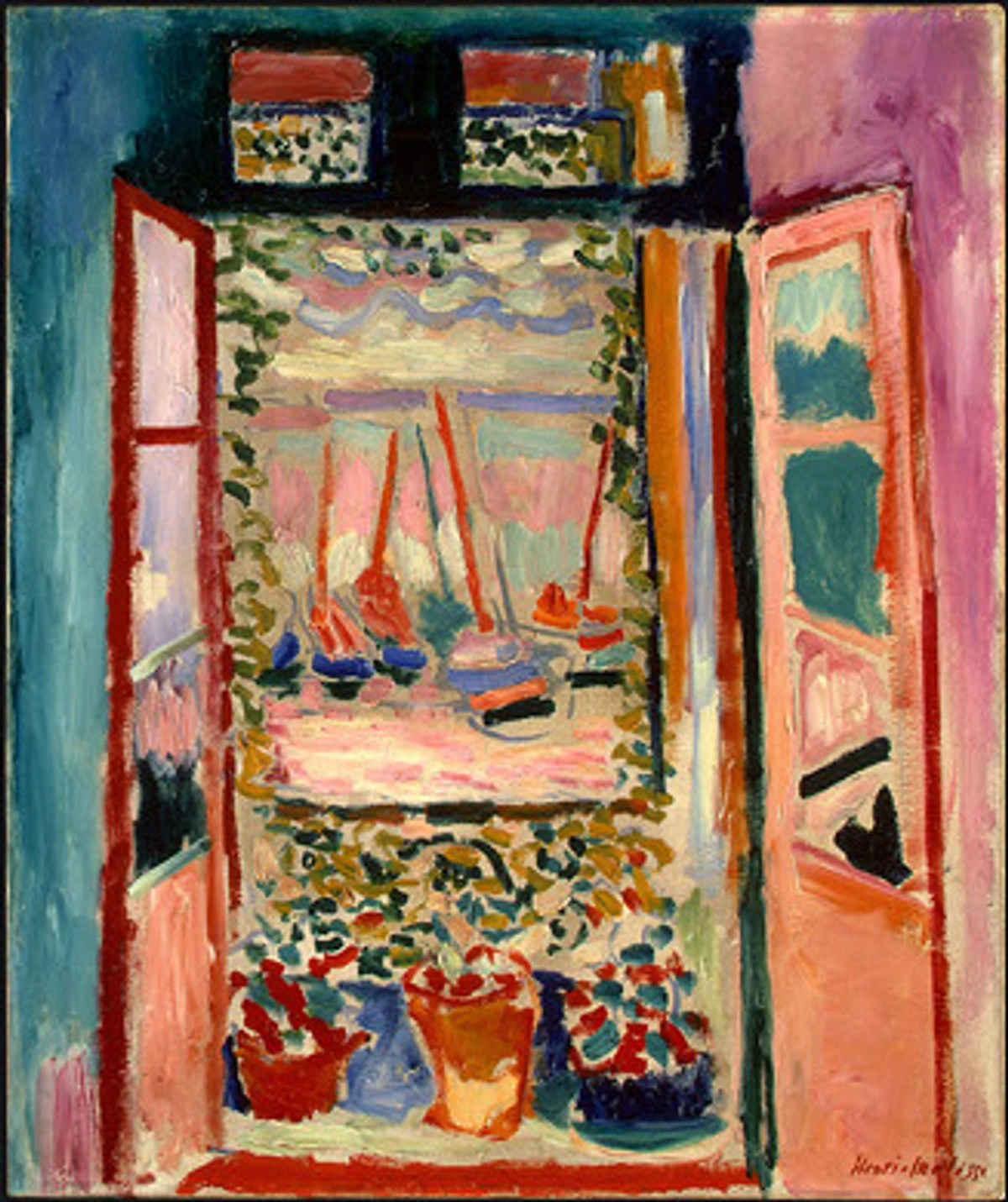
What pigments are commonly used with casein paint?
Casein paint can be formulated with a wide range of traditional and modern pigments. Historically, natural earth pigments, mineral pigments (like lapis lazuli for blues), and plant-based dyes were common. Today, professional casein paints utilize high-quality, lightfast pigments, similar to those found in other artist-grade paints like watercolors or acrylics. The key is that the pigments must be compatible with the alkaline nature of the casein binder. This usually isn't an issue with commercially prepared paints. You'll find vibrant cadmiums, rich phthalos, classic ochres, and modern synthetic organic pigments all available in casein formulations, offering a full spectrum of color for any artistic vision, from subtle portraits to bold abstract works.
Does casein paint have a strong smell?
When wet, casein paint typically has a faint, slightly milky or dairy-like odor, which is to be expected given its milk protein binder. This smell is generally mild and dissipates quickly as the paint dries, usually within minutes. It is far less potent or offensive than the fumes associated with oil paints (which often require solvents like turpentine or mineral spirits) or some solvent-based varnishes. For most artists, the smell is negligible and certainly not a deterrent, especially in a well-ventilated studio. Always ensure good ventilation in your workspace regardless of the medium you're using, as good air circulation is beneficial for both health and drying times.
What are common mistakes artists make with casein paint?
Many artists initially struggle with casein's fast drying time. A common mistake is trying to blend colors on the palette for too long, only to find them dry and unusable; having a stay-wet palette is truly a game-changer here. Another pitfall is applying thick impasto layers on flexible canvases without adequate gesso or a rigid support, which can lead to cracking over time due to casein's rigid dry film. Not cleaning brushes immediately after use is a cardinal sin, as dried casein is notoriously difficult to remove from bristles – a mistake you usually only make once! Lastly, confusing its water-resistance with complete waterproofing can lead to issues if an uncured painting is exposed to too much moisture or left outdoors without proper sealing. Understanding these nuances from the start will save you a lot of frustration and lead to a more rewarding painting experience!
What's the difference between casein and egg tempera?
Both casein and egg tempera are ancient painting mediums that utilize natural protein binders, but they employ different sources: casein uses milk protein, while egg tempera uses egg yolk (specifically the yolk emulsion). The key differences lie in their handling and dried properties: casein is generally more opaque and can be applied in thicker layers, allowing for a broader range of brushwork, from smooth fields of color to distinct impasto effects. Egg tempera, on the other hand, is typically applied in fine, meticulous, translucent strokes, building up luminosity through countless thin layers and often relying on cross-hatching to achieve form and volume. Casein becomes quite water-resistant when dry, whereas egg tempera, while durable, remains more prone to water damage even after drying, requiring careful protection. Each offers a distinct artistic experience and aesthetic, rooted in centuries of artistic tradition. ### How should I thin casein paint for different effects?
Thinning casein paint is primarily done with water, and mastering the ratio of paint to water is key to unlocking its full expressive potential. This ratio directly determines its transparency, flow, and handling characteristics. Here's a breakdown:
- For Transparent Washes: Akin to watercolor, add a significant amount of water until the consistency is like ink or a light stain. These luminous glazes are perfect for building up subtle color, atmospheric effects, or laying down initial underpaintings where you want underlying layers to show through. The more water, the more transparent and flowing.
- For Opaque Applications: Similar to gouache or traditional tempera, use less water, creating a creamy, buttery consistency that covers exceptionally well. This allows for solid color fields, crisp details, and vibrant, flat areas. You want it thick enough to hold its color without being too stiff to brush.
- For Impasto Textures: Use the paint almost straight from the tube with minimal water, just enough to make it workable and hold its peaks and brushstrokes. A palette knife is often ideal for these bold, sculptural applications.
Some artists also use specialized casein mediums to adjust flow, enhance transparency without over-thinning, or modify working time, but water is your primary and most accessible tool for achieving varied effects. Always add water gradually, mixing thoroughly, and test on a scrap surface. Remember, a crucial characteristic of casein is that it often dries lighter than it appears wet, so account for this in your mixing!

credit, licence

What kind of palette should I use for casein paint?
Because casein dries quickly and becomes water-resistant, a non-absorbent palette is absolutely ideal to maximize your working time and prevent premature drying on your mixing surface. Glass, ceramic, porcelain, or plastic palettes work wonderfully, as they don't absorb any moisture from the paint. I've found that keeping a damp cloth nearby to periodically wipe and re-moisten your mixing area can significantly help keep the paint workable for longer. Even better, investing in a stay-wet palette (often marketed for acrylics) can be a game-changer, as it provides a consistently humid environment that dramatically extends the paint's open time.
While disposable paper palettes can be used in a pinch, you might find the paper absorbs too much moisture from the paint, leading to even faster drying than normal, which can be frustrating. The key is to have a smooth, non-porous surface that allows you to control the paint's consistency before application without it drying out too rapidly. Choosing the right palette is a simple but effective way to improve your casein painting experience.

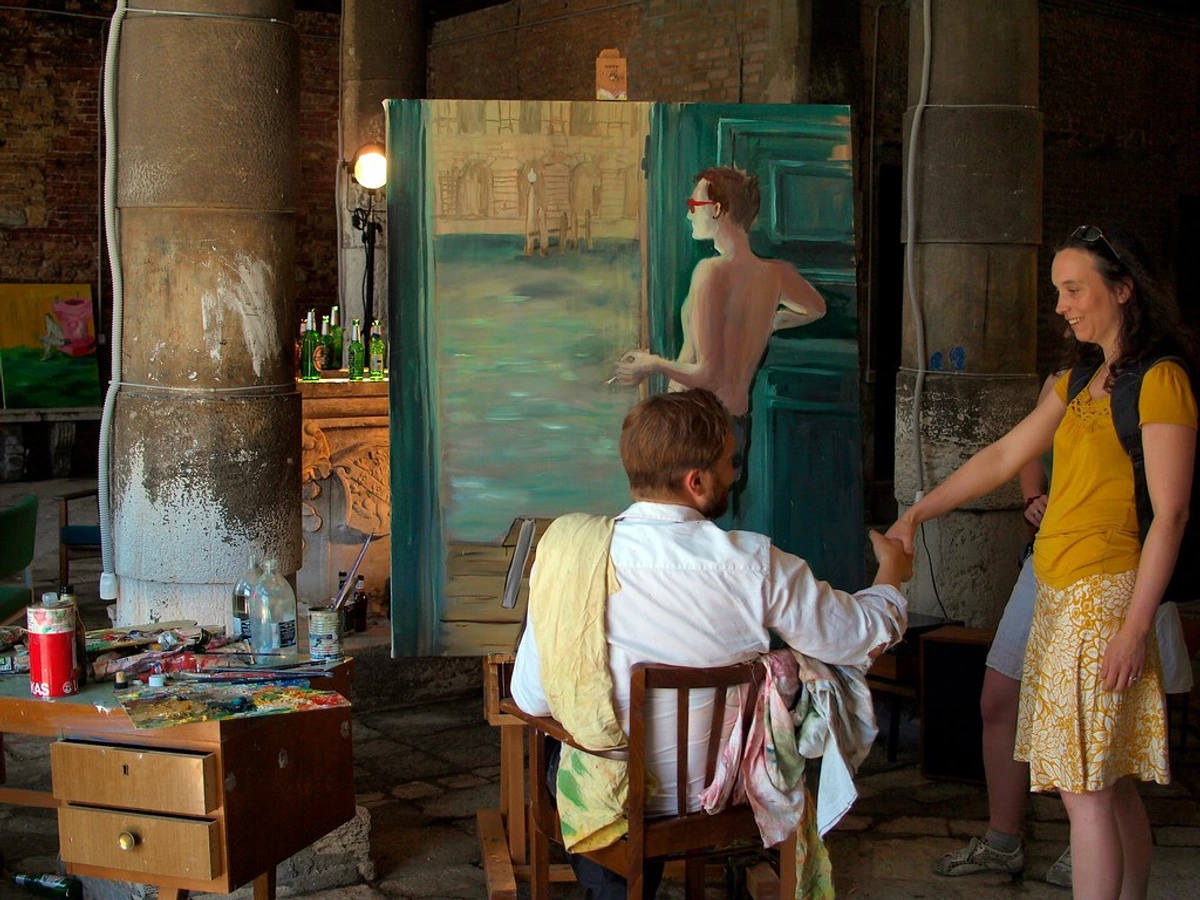
Can casein paint be used on fabric or textiles?
While casein paint adheres well to many absorbent surfaces, its suitability for fabric or textiles is generally limited. Because casein dries to a relatively rigid, non-flexible film, applying it thickly to textiles that will be frequently creased, washed, or subjected to significant movement can lead to cracking, flaking, and a loss of adhesion over time. For decorative, non-wearable textile art that won't be washed or flexed much, such as wall hangings that remain static, it might be possible with very thin applications and proper sealing. However, it's definitively not ideal for clothing or items requiring flexibility and frequent washing. Fabric-specific paints (like acrylic textile paints) are engineered for the flexibility and washability needed for such applications.
How do I store casein paint?
Proper storage is essential to maintain the quality and usability of your casein paints. Store casein paints in tightly sealed tubes or airtight containers at room temperature, away from extreme heat or cold. Like any water-based paint, preventing air exposure is absolutely key to stopping it from drying out prematurely in the tube or pot. Make sure caps are screwed on tightly and any container lids form a good seal.
If you mix custom colors on your palette, you can transfer them to small, airtight containers (like mini plastic tubs or empty watercolor pans) for a short period. However, be aware that even with good sealing, homemade or mixed casein paints will eventually dry out and harden more quickly than commercially packaged tubes due to their fast-drying nature and lack of industrial preservatives. For longer-term storage of mixed colors, a stay-wet palette can be a useful tool, though even those have limits. Always aim to use your mixed colors within a day or two for best results.
Explore More Art Techniques and Insights
If you're keen to explore other painting methods and artistic concepts, I truly encourage you to delve deeper. Understanding different paint types is a journey in itself, and you can enrich your practice significantly by knowing the tools at your disposal. Start with our definitive guide to paint types for artists for a broad overview of the entire spectrum of artistic mediums. Or, if you're like me and fascinated by the historical evolution of art materials, our article on the history of acrylic painting from industrial innovation to artistic medium might spark your interest, showing how even 'new' mediums have their own rich stories. You might also enjoy reading about the history of tempera painting, which shares some ancestral ties with casein and offers another window into ancient techniques. For those interested in related opaque water-based paints, our review of reviewing the best gouache sets for beginners could be a valuable next step.
Remember, the journey of artistic discovery is endless and intensely personal. Keep exploring, keep creating, and allow yourself the freedom to experiment. Perhaps you'll find your own path to expressive abstract art, much like the pieces you'll find at our den Bosch museum or available to buy directly. There's a whole world of art materials waiting to inspire your next masterpiece, urging you to leave your unique mark on the world! Don't be afraid to embrace the unexpected, just as casein itself offers a fresh perspective on ancient traditions.
Now, go forth and paint! And if you discover a new trick with casein, or create something truly spectacular, I'd love to hear about it. Share your journey; the art world is richer for it.
